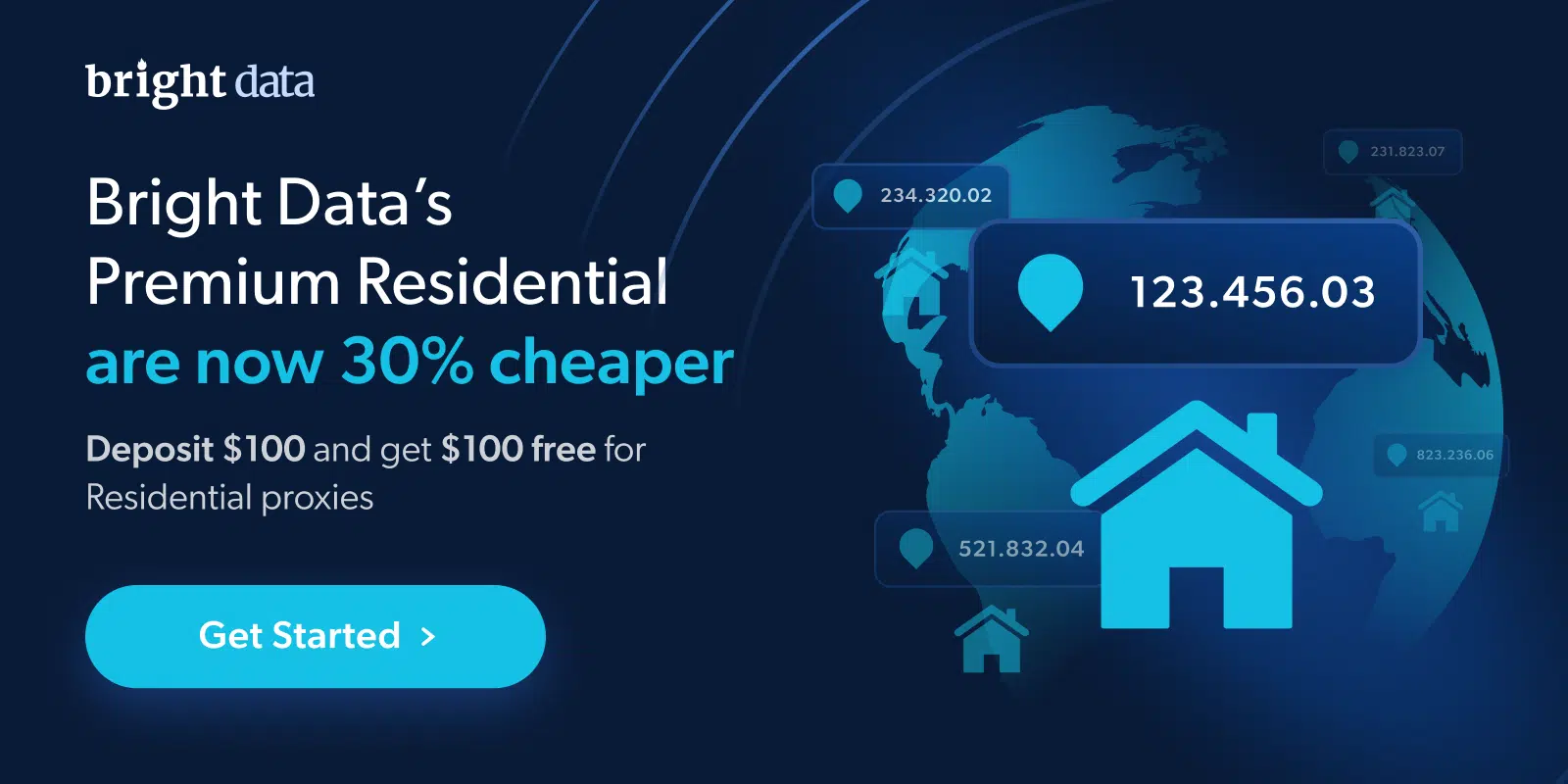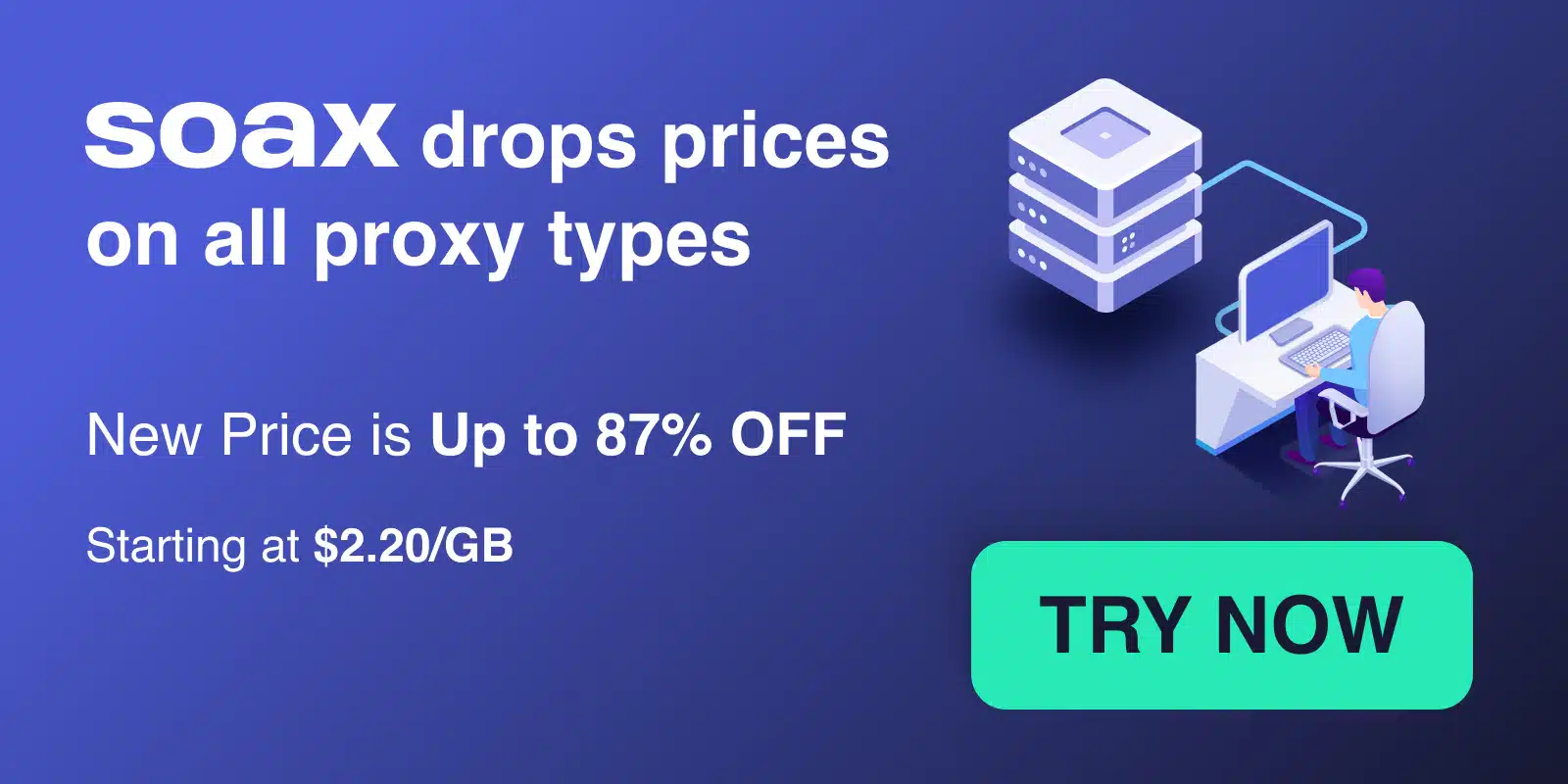Antidetect browsers have become a staple in the web scraping and online marketing world. These powerful tools allow users to manage hundreds of unique browser profiles without worrying about fingerprinting or account bans. While once a niche category, the antidetect browser market has exploded in recent years.
With so many options to choose from, picking the right antidetect browser for your needs can seem daunting. That‘s why we‘ve put together this ultimate guide. We‘ll dive deep into the leading antidetect browsers, comparing their features, performance, and ideal use cases. But first, let‘s clarify what makes an antidetect browser tick.
How Do Antidetect Browsers Work?
An antidetect browser is a tool designed to create and manage multiple browser profiles, each with its own unique fingerprint. Browser fingerprinting is a technique used by websites to identify and track visitors based on telltale configuration data like:
- User agent
- IP address
- Screen resolution
- Installed fonts
- WebGL fingerprint
- Hardware specs
Normally, this fingerprint stays relatively consistent across sessions. Even if you switch IPs with a proxy, clear cookies, or use incognito mode, sites can still recognize you based on the overall fingerprint profile.

Source: How Browser Fingerprinting Works (Infographic) – Smartproxy Blog
Antidetect browsers work by comprehensively spoofing each data point that goes into a fingerprint. They allow customizing every detail for each profile, generating configurations that appear as unique users. Techniques like Canvas and WebGL spoofing, user agent rotation, and injection of saved cookies fool even the most advanced fingerprinting scripts.
When paired with quality proxies, antidetect browsers are extremely effective at managing multiple accounts for web scraping, ad verification, e-commerce, and more. They allow distributing traffic across hundreds of low-fingerprint profiles to avoid bot detection and maximize success rates.
Choosing an Antidetect Browser: Key Criteria
With over a dozen antidetect browsers vying for market share, it‘s important to cut through the noise and carefully evaluate the options. Here are the essential features and characteristics to look for:
1. Fingerprint Customization
The more control you have over the browser fingerprint, the better. Look for a tool with granular customization of every browser property, from user agent and fonts down to WebGL and WebRTC handling. Preset profiles are helpful for quickly spinning up instances, but the ability to fine-tune is a must.
2. Proxy & Automation Support
Integration with proxies is essential for account management at scale. The best antidetect browsers support all the major proxy protocols (HTTP, SOCKS4/5) and allow configuration directly in the browser settings.
For large operations, support for automation tools like Puppeteer and Selenium is also key. An API for programmatic browser control is extremely helpful and can pay dividends in time savings.
3. Pricing & Profile Limits
Antidetect browsers are powerful tools and their pricing reflects that. For a quality product, expect to pay at least $30-$50 per month as a starting point. Be wary of free or suspiciously cheap options as they likely cut corners.
Also pay attention to the number of profiles included in each plan. For small-scale use, 20-50 profiles is plenty. But if you‘re running a serious operation, you may need hundreds or thousands. Some antidetect browsers put a hard cap on profiles even with the top plans.
4. Collaboration Features
If you‘re working as part of a team, antidetect browser syncing and collaboration features can be a huge timesaver. Look for secure cloud storage of profile data that can be easily shared with team members. Other helpful features include a web-based multi-user dashboard and live browser states (cookies, sessions, etc.) that can be passed between team members.
5. Ease of Use
While antidetect browsers are inherently complex, that doesn‘t mean they have to be hard to use. A well-designed and intuitive interface goes a long way. Documentation and customer support are also important considerations. Since problems are bound to come up, having a responsive and knowledgeable support team is invaluable.
Top 5 Antidetect Browsers for 2024
Using the criteria outlined above, we tested and compared all the leading antidetect browsers on the market. Here are our top picks for 2024:
1. AdsPower

Key Features:
- Easy visual automation builder
- Built-in support for popular ad platforms
- Android emulation for mobile profiles
- RPA integration for more complex automations
Pricing:
- Starter: $49/month (10 profiles)
- Standard: $99/month (20 profiles)
- Pro: $249/month (40 profiles)
- Custom plans available
Best for:
- Advertisers and affiliate marketers
- E-commerce stores managing multiple accounts
- Agencies running campaigns for multiple clients
AdsPower has quickly made a name for itself with its powerful yet easy-to-use automation tools. The visual drag-and-drop automation builder requires zero coding knowledge and makes it simple to automate repetitive tasks across profiles.
The browser also offers excellent mobile emulation via an integrated Android app. This allows interacting with fingerprints as both desktop and mobile users for maximum coverage. Pre-built integrations with major ad platforms like Facebook Ads and Google Ads are also extremely helpful for advertisers.
2. Multilogin

Key Features:
- Highly customizable browser fingerprints
- Team collaboration via cloud profile sync
- Flexible pricing based on number of profiles
- Selenium, Puppeteer, and Playwright integrations
Pricing:
- 100 profiles: $119/month ($1.19 per profile)
- 1000 profiles: $699/month ($0.70 per profile)
- 5000 profiles: $1,999/month ($0.40 per profile)
Best for:
- Large in-house marketing teams
- Enterprises managing many e-commerce stores or social accounts
- Web scraping at scale across thousands of IPs
One of the first antidetect browsers, Multilogin (also known as Indigo Browser) remains the gold standard for many users. Its highly granular fingerprint controls and deep integrations with automation tools make it well-suited for sophisticated e-commerce and web scraping operations.
Multilogin offers a flexible pricing model based on the number of profiles rather than tiers. This allows starting small and scaling up as needed without big jumps in monthly spend. The interface is not as polished as some newer competitors, but the core functionality is rock solid.
3. Smartproxy X-Browser

Key Features:
- Simple, intuitive profile creation
- Emulates mobile devices with a dedicated Android app
- Runs on Windows, Mac, Linux, and the web
- Includes access to Smartproxy‘s residential proxy network
Pricing:
- X-Browser is free, requires a Smartproxy plan
- Micro: $50/mo – 100GB, 10 browser profiles
- Starter: $100/mo – 250GB, 50 browser profiles
- Regular: $200/mo – 1TB, 100 browser profiles
Best for:
- Smartproxy residential proxy customers
- Solo marketers and freelancers
- Users who value simplicity over advanced features
Smartproxy‘s X-Browser takes a slightly different approach by bundling the antidetect browser for free with its popular residential proxy plans. It‘s a simpler tool compared to heavy-hitters like Multilogin, but gets the job done for most use cases.
The intuitive point-and-click interface makes setting up new fingerprints a breeze. Built-in Android emulation is also helpful for managing mobile profiles. Those looking for an affordable all-in-one proxy and antidetect browser solution will find a lot to like with X-Browser.
4. GoLogin

Key Features:
- 100% cloud-based, no software to install
- Simple browser fingerprint customization
- Flexible plan sizes based on number of profiles
- Free plan with up to 10 browser profiles
Pricing:
- Free: 10 profiles
- Standard: $49/month (20 profiles)
- Professional: $99/month (100 profiles)
- Enterprise: $1499/month (2500 profiles)
Best for:
- Freelancers and small business owners
- Users who want a cloud-based solution
- Marketers looking for an affordable jumping off point
GoLogin is a relative newcomer that‘s quickly making waves with its user-friendly cloud interface and attractive pricing. It‘s the only major antidetect browser to offer a totally free plan, which is great for getting a feel for the product.
All plans come with GoLogin‘s full suite of features, so you‘re not missing out on any functionality by starting small. The fingerprint customization interface is intuitive and allows for a good degree of fine-tuning. GoLogin also boasts an extremely responsive customer support team to help troubleshoot any issues.
5. Kameleo

Key Features:
- Unlimited browser profiles on all plans
- Unique "AntiDetect" mode for enhanced bot avoidance
- Android app for mobile profile emulation
- Built-in watermarking for ad account verification
Pricing:
- Starter: €59/month (1 team seat)
- Scaling: €179/month (3 team seats)
- Teams: €379/month (10 team seats)
- Custom enterprise plans available
Best for:
- Advertisers looking to scale without profile limits
- Affiliates wanting maximum anonymity and bot protection
- Agencies that need to collaborate on profiles
Kameleo sets itself apart with an unlimited number of browser profiles on all paid plans. So whether you need 10 profiles or 10,000, the pricing stays consistent. This is great for businesses that anticipate scaling up quickly.
The browser‘s "AntiDetect" mode is also noteworthy. It adds an extra layer of protection by transparently switching data center IPs for each profile to deter behavioral analysis and maximize uptime during high-frequency tasks.
How to Get the Most From Your Antidetect Browser
Choosing the right antidetect browser is only half the battle. To really maximize its effectiveness, follow these best practices:
1. Pair With Quality Proxies
No matter how well your antidetect browser spoofs a fingerprint, using the same IP for all profiles is asking for trouble. Pair each profile with its own unique proxy for the best results. Residential IPs from providers like Smartproxy, Bright Data, and Oxylabs are ideal as they are much harder to detect compared to data center IPs.
2. Avoid the Cheapest Option
You‘ll find plenty of cheap or even free antidetect browsers out there. But remember, if something seems too good to be true, it probably is. These bargain bin tools often cut corners by using lower quality browser engines, subpar proxy management, and weak bot deterrence. It‘s worth paying for a reputable tool.
3. Use Mobile Emulation
With mobile web traffic now exceeding desktop, supporting mobile profiles is more important than ever. Look for an antidetect browser that offers mobile emulation via an Android app. This will allow you to interact naturally with mobile versions of websites and apps while enjoying the fingerprint protections of an antidetect browser.
4. Automate with Care
Browser automation is a powerful time saver, but also a common red flag for anti-bot scripts. Space out your automated actions and introduce some randomness to simulate human behavior. Setting different delays for each profile is also a good idea. Finally, stick to automating simple, repetitive tasks and do more complex actions like actual product/ad creation manually when possible.
5. Test, Audit, Iterate
No antidetect setup is perfect out of the gate. It‘s critical to thoroughly test each profile on both desktop and mobile before deploying it in the wild. Keep a close eye out for any signs of detection like captchas or verification requests. And don‘t be afraid to tweak things like user agents, proxy configurations, and automation patterns until you strike the right balance.
The Future of Antidetect Browsers
As the web grows increasingly hostile to bots, the need for effective antidetect solutions will only intensify. Here‘s how we expect antidetect browsers to evolve in the coming years:
Smarter Fingerprint Spoofing
Right now, the cat-and-mouse game between fingerprinters and spoofers is largely centered on specific methods like Canvas and WebGL. In the future, antidetect browsers will need to take a more holistic approach, perhaps using AI and machine learning to more convincingly mimic human behavior patterns at scale.
More Mobile Support
With mobile browsing now dominating web usage, supporting more mobile-only sites and apps will be critical. Antidetect browsers will likely introduce Android and iOS apps that run real native browser engines vs. spoofing them in an emulator. This will make mobile fingerprints even harder to identify as synthetic.
Tighter Proxy Integration
As proxy quality becomes a bigger differentiator, look for antidetect browsers to form exclusive partnerships with best-in-class proxy providers. Offering high-quality proxies "out of the box" will become table stakes. Tighter software integrations with proxy services will also help optimize switching, auth, and other configurations for maximum performance and uptime.
Rise of the Integrated Platforms
Currently, web scraping and marketing automation workflows involve stitching together multiple tools – antidetect browsers, proxies, scraping/automation software, and more. Consolidation around end-to-end platforms that handle the entire data pipeline is likely as the industry matures. Antidetect browsers will still play a key role, but as part of a more cohesive ecosystem vs. standalone tools.
Key Takeaways
Antidetect browsers are now essential tools for web scraping, online marketing, and more. As websites ramp up efforts to block bots, using an antidetect browser to manage unique profiles is the only way to stay in the game long-term. To recap:
- Antidetect browsers work by comprehensively spoofing browser fingerprints so each profile appears to be a unique user.
- Key features to look for include granular fingerprint customization, proxy and automation support, team collaboration tools, and an intuitive interface.
- Five of the top antidetect browsers are AdsPower, Multilogin, X-Browser, GoLogin, and Kameleo. Each has unique pros and cons, but all are solid picks overall.
- To get the most from an antidetect browser, pair it with quality proxies, support mobile profiles, and carefully manage automation. Continuous testing is also critical.
- The future of antidetect browsers will likely center on smarter fingerprint spoofing, tighter mobile support, and integrations with proxy services. Full-stack platforms may also emerge.
There‘s little doubt that the war between bots and websites will continue to escalate. But with a robust antidetect browser in your toolkit, you‘ll be well-positioned to adapt and thrive as the landscape evolves. Here‘s to secure, successful projects in 2024 and beyond!


